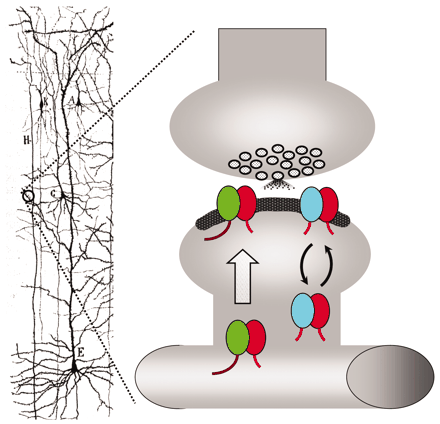AMPA Receptor Trafficking: A Road Map for Synaptic Plasticity
Abstract
Most excitatory transmission in the brain is mediated by α-amino-3-hydroxy-5-methyl-4-isoxazolepropionic acid (AMPA)-type glutamate receptors (AMPA receptors). Therefore, the presence of these receptors at synapses has to be carefully regulated in order to ensure correct neuronal communication. Interestingly, AMPA receptors are not static components of synapses. On the contrary, they are continuously being delivered and removed in and out of synapses in response to neuronal activity. This dynamic behavior of AMPA receptors is an important mechanism to modify synaptic strength during brain development and also during experience-dependent plasticity. AMPA receptor trafficking involves an intricate network of protein-protein interactions that start with the biosynthesis of the receptors, continues with their transport along dendrites, and ends with their local insertion and removal from synapses. The molecular and cellular mechanisms that regulate each of these processes, and their importance for synaptic plasticity, are now starting to be unraveled.

- © American Society for Pharmacology and Experimental Theraputics 2010



